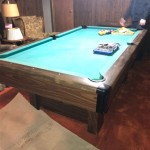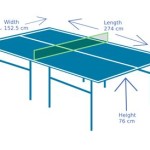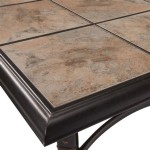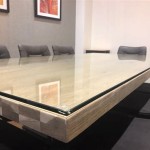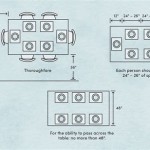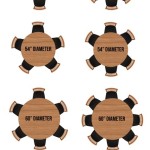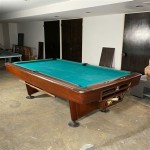How To Make A Reclaimed Wood Table
Reclaimed wood tables are a beautiful and sustainable way to add character and charm to your home. This type of furniture is made from salvaged wood, often from old buildings, barns, or even shipping pallets. Not only does reclaimed wood offer a unique aesthetic, but it also reduces waste and contributes to a greener environment. Building a reclaimed wood table is a rewarding project that allows you to create a one-of-a-kind piece of furniture that reflects your personal style. This guide will walk you through the steps of making a reclaimed wood table, from sourcing the wood to finishing the final product.
Sourcing Reclaimed Wood
The first step to making a reclaimed wood table is to find the wood. There are several ways to source reclaimed wood, each with its own advantages and disadvantages:
- Salvage Yards and Demolition Sites: These are excellent places to find large quantities of reclaimed wood, often at affordable prices. However, you may need to sift through a lot of wood to find pieces suitable for your project.
- Antique Shops and Thrift Stores: These stores may have reclaimed wood furniture or building materials that you can purchase or repurpose. You may need to be creative and see what kind of wood can be salvaged.
- Online Marketplaces: Websites like Craigslist, Facebook Marketplace, and Etsy offer a wide selection of reclaimed wood from various sources. You may need to pay a premium for pre-cut and ready-to-use wood.
- Local Woodworkers: Many woodworkers have connections to local sources of reclaimed wood or may even have some stock they are willing to sell.
Once you have found your reclaimed wood, it's important to inspect it for any damage or imperfections. Check for signs of rot, insect infestation, or warping. You may need to cut away damaged areas or stabilize the wood before using it for your table.
Preparing the Wood
After sourcing the reclaimed wood, you need to prepare it for construction. This includes cleaning, sanding, and possibly treating the wood. The preparation process will vary depending on the condition and type of wood you are using. However, the general steps are:
- Cleaning: Use a wire brush or scraper to remove dirt, grime, and debris from the wood. You may need to use a pressure washer to remove stubborn dirt or paint.
- Sanded: Sand the wood to remove any rough edges and create a smooth surface. Start with coarse-grit sandpaper and gradually move to finer grits.
- Treating: Reclaimed wood may contain old paint, varnish, or other coatings that you may want to remove. Consider using a chemical stripper, heat gun, or sanding to remove these coatings. You may also need to treat the wood with a sealant or stain to protect it from moisture and insects.
Building the Table
Once the wood is prepared, you can start assembling the table. The specific steps will depend on the design you are using. However, the general steps are:
- Cut the wood: Use a saw to cut the wood to the desired dimensions for the table top, legs, and any other structural elements.
- Join the pieces: Use wood glue, screws, dowels, or other joinery techniques to assemble the table top, legs, and frame.
- Finish the table: Once the table is assembled, you can finish it by sanding, staining, and/or adding a topcoat.
Finishing the Table
After the table is assembled, it's time to finish it. This includes sanding, staining, and applying a topcoat. The finishing steps will depend on the desired look and protection for your table. The general finishing steps are:
- Sanding: Sand the table to remove any rough edges and create a smooth surface. Start with coarse-grit sandpaper and gradually move to finer grits.
- Staining: Staining the wood can enhance the natural beauty of reclaimed wood and add color and depth to the table. Apply stain according to the manufacturer's instructions.
- Topcoat: Applying a topcoat protects the wood from moisture, scratches, and stains. Choose a finish that complements the reclaimed wood and your desired look.
Applying a finish, especially a topcoat, can be tricky. Some finishes require multiple coats for a smooth finish and adequate protection. Follow the manufacturer's instructions carefully.

Reclaimed Wood Table 5 Steps With S Instructables

Diy Barn Wood Table From To Dining

Diy Reclaimed Wood Table Dining

Wooden Table 15 Easy Diy Reclaimed Wood Projects Palete Reciclado Móveis Casa

Diy Barn Wood Table From To Dining

Diy Farmhouse Dining Table With Reclaimed Wood And Hearth

Diy Farmhouse Dining Table W Inlays Using Reclaimed Barnwood

How To Resurface A Table With Reclaimed Wood

How I Built A 2650 Rh Inspired Console Table For Free Anderson Grant

Diy Reclaimed Wood Table The Aspirational Hipster
Related Posts

